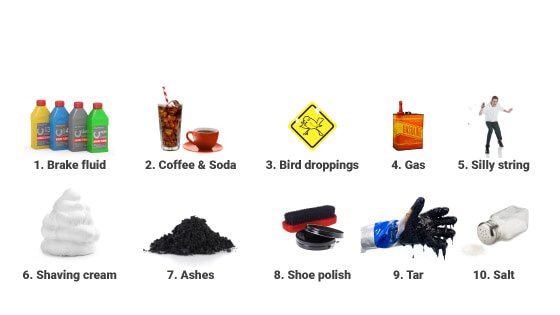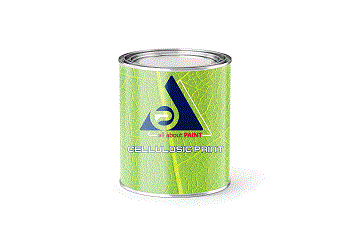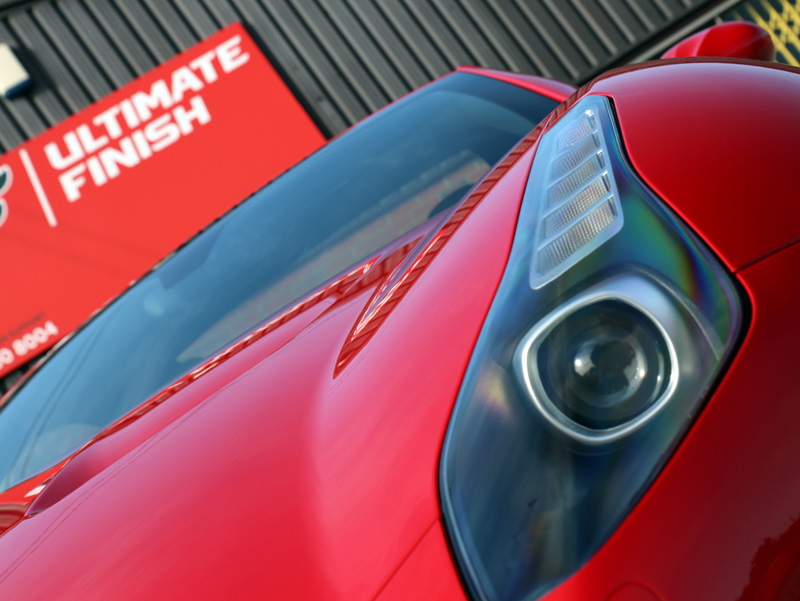Top 10 Surprising Things that Damage Car Paint

Top 10 Surprising Things that Damage Car Paint
Car owners beware! There are many products and chemicals out there that can permanently damage your car’s paint. Knowing in advance which things can be harmful will help you prevent something from ruining the paint job. Avoid expensive damages or repainting your car by avoiding these harmful substances.
Let’s run down the most common – and most surprising – 10 things which can damage your car’s paint.
Brake fluid
Coffee & Soda
Bird droppings
Gas
Silly string
Shaving cream
Ashes
Shoe polish
Tar
Salt
Top 10 Surprising Vehicle Paint Enemies
Brake fluid
There has been some confusion over this substance’s damaging effects in the automotive world. The experts say that not all brake fluids are actually harmful to the car’s surface, but you should be careful when handling brake fluids that are not silicone-based. Generally, this refers to older types of brake fluid, which are caustic can act like paint thinner and cause the outer layer to peel. The development of more durable car paints has also helped to protect the vehicle from these types of chemicals.
Coffee & Soda
Most people don’t know that beverages like coffee and soda can harm your car paint. These drinks have high acidity levels which can eat away at the protective layer of paint and begin the corrosion process. Sugar added to the coffee and which is present in soda drinks also leave behind a sticky residue. Be sure to clean up any messes as soon as possible to prevent long-term damage.
Bird droppings
Another damaging substance that will probably surprise you is bird excretions. The droppings can leave a permanent mark on the outside of a vehicle because they are acidic and, when baked on under the sun, they harden onto the paint. It’s best not to let the droppings dry and remove them promptly with a wet rag and mild detergent. When cleaning, try not to rub the spot because seed particles and grit in the droppings can scratch the surface of the underlying paint.
Gas
Car owners should be careful when filling up the tank. Gas that overflows or drips onto the body of the car can stain. The gasoline evaporates, but it can leave marks behind and damage the clear coat. The best preventative measure is to have the vehicle waxed after each car wash. This will also make cleanup easier.
Silly string
It may seem like a harmless prank or a fun way to celebrate, but spraying silly string onto a car can actually leave a stain. If the resin and colorants in the silly string are allowed to dry in the sun, they could cause further damage. To clean silly string from the car, we recommend spot cleaning with soap in water or a full car wash for bigger messes. Any remaining residue could be removed with the help of WD40 or a similar spray product.
Shaving cream
Similarly, shaving cream can cause discoloration of car paint if it’s left there. Wash the vehicle thoroughly with soap as soon as possible.
Ashes
Wildfires or house fires in the area can be a threat to your car. If ashes and soot settle on the outside of the vehicle and are exposed to moisture, from sprinklers or rain for example, it causes a chemical reaction. When wet, the potassium and calcium in the ashes can etch the car’s paint and leave a dark grey stain.
Shoe polish
You might be surprised to find out that shoe polish can stain a car and may be difficult, if not impossible to remove. It’s important not to let it sit or dry on the paint. To clean the polish off your car, refer to an automotive supply store to find a specialized detergent.
Tar
When the outside temperatures peak during the summer months, it’s possible to spot tar that has started to melt. Tar can also pose a problem if you drive through fresh asphalt that has just been laid. The substance tends to stick to the car’s paint and, if allowed to dry, it can be tough to get off. Your local auto accessory store should carry products that will help dissolve the tar without damaging the paint.
Salt
In many areas, including Pennsylvania, salt is used to prevent ice from forming and melt ice on the roadways during the winter. It is an efficient and inexpensive way to make streets safer when the temperatures drop, but it can lead to big problems for your car. Road salt can make your vehicle more susceptible to rust and speed up the corrosion process. To help protect the paint and body of the car from rust, wash it often during the winter. You should also have it treated with a wax or sealant before the first snow. If you have just purchased a new car, consider investing in permanent rust protection treatment.

.png)
.png)
.png)
.png)




